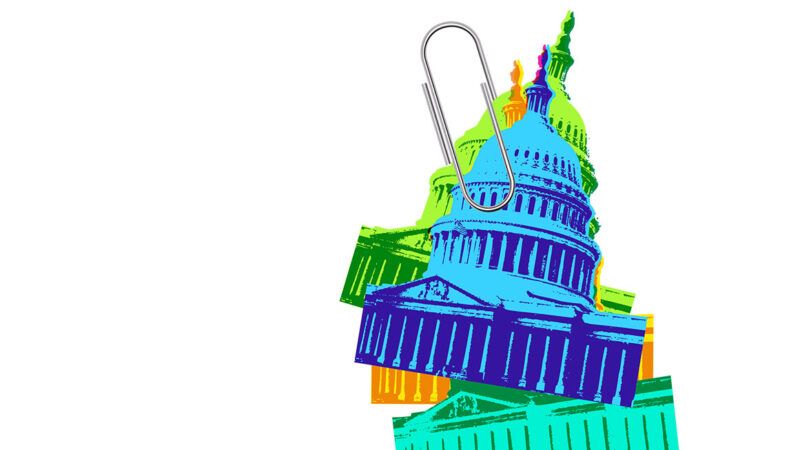The Return of Earmarks Means More Pork-Barrel Spending by Congress
Lawmakers stuffed more than $8 billion in pet projects into an omnibus federal spending bill passed in March. But wait, didn't Congress ban earmarks back in 2011?

Lawmakers stuffed more than 4,000 pet projects, totaling more than $8 billion, into an omnibus federal spending bill passed in March. But wait, didn't Congress ban earmarks back in 2011?
Yes, a Republican majority in 2011 banned earmarks, also called pork-barrel spending, in response to scandals like Alaska's $398 million "Bridge to Nowhere" and the earmark-related crimes of lobbyist Jack Abramoff. But because the rules Congress sets for itself apply only if Congress wants them to, the earmark ban has gone the way of other fiscally conservative reforms of the Tea Party era, such as discretionary spending caps.
That means federal taxpayers will contribute $1.6 million to a Roger Williams University program intended to promote the "development of equitable growth of shellfish aquaculture" in Rhode Island; $800,000 to help build "artist lofts" in California; a cool half million for a new ski jumping facility in New Hampshire; and $1.5 million for a new playground in San Francisco.
Senate Majority Leader Chuck Schumer (D–N.Y.) secured funding for 142 projects, according to a list of earmarks compiled by Sen. Mike Braun (R–Ind.). Among the vital national interests that Schumer squeezed into the bill: $1.1 million for a "rail-trail," $3 million for the Brooklyn Museum, and $1.5 million for capital improvements at a Staten Island theater. While each of those line items is just a drop in the federal budget bucket, waste is waste.
Advocates for bringing back earmarks have argued for years that a little congressional grift helps grease the wheels of government—as if Congress has ever been reluctant to spend money. The idea that earmarks facilitate bipartisan cooperation is belied by the fact that the omnibus bill included earmarks for several Republican lawmakers who voted against it.
The problem with earmarks has always been that they are secretive and opaque, often slipped into legislation with no public oversight or process for determining whether the spending is really needed. That hasn't changed.
The 2,741-page text of the omnibus bill was made public on Wednesday, March 9. By the end of the week, the bill had sailed through both chambers of Congress and was on its way to President Joe Biden's desk. There was little time for the public to scrutinize 367 pages of earmarks or any other part of the $1.5 trillion spending plan, which funds the federal government through the end of September.
Braun, who offered an amendment on the Senate floor to strip out the earmarks from the bill, called the final package "a disgrace." Not enough of his colleagues agreed. The pork-killing amendment failed, 64–35.
